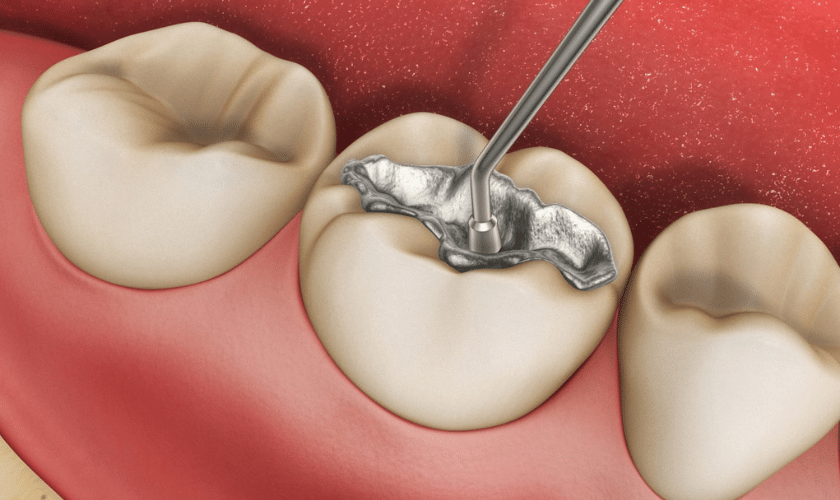Have you recently had a dental filling and are now wondering why your tooth still hurts?
It’s a common concern and can leave you feeling puzzled and uncomfortable. Dental fillings are designed to restore your tooth and alleviate pain, so when you continue to feel discomfort, it’s natural to ask, “Why is this happening?”
Understanding why your tooth might still ache after a filling is crucial for addressing the issue effectively. In this blog, we’ll explore the most common reasons for persistent pain, from high fillings to underlying tooth problems.
You’ll gain insights into what might be causing your discomfort and what steps you can take to resolve it. So, let’s dive in and uncover why your tooth might still be sore and what you can do about it!
Common Reasons for Tooth Pain After a Filling
High Filling
If your tooth feels sore after a filling, the first thing to check is whether the filling is too high. A high filling means the material is raised above the natural tooth surface, causing improper contact with the opposing tooth. This can lead to discomfort or pain when you bite down.
- What to Look For: Notice if your tooth feels sensitive to pressure or if your bite feels uneven.
- What to Do: Contact your dentist. They can adjust the filling to ensure it aligns properly with your bite.
Inflammation in the Tooth Nerve
After a filling, inflammation of the tooth’s nerve can occur. This happens because the filling might have exposed the nerve or aggravated it during the procedure. Inflammation can cause persistent pain or sensitivity.
- Symptoms: Pain when biting or chewing, sensitivity to hot or cold foods.
- What to Do: Schedule a follow-up visit with your dentist. They might recommend a desensitizing treatment or further evaluation to address nerve irritation.
Cracked Tooth or Tooth Damage
Sometimes, the tooth can have cracks or damage that existed before the filling was placed. The filling might cover up these issues, but the pain from the underlying problem can persist or worsen.
- Signs: Pain that doesn’t seem related to the filling itself, or cracks visible on the tooth.
- What to Do: Have your dentist examine the tooth thoroughly. They may suggest additional treatments or repairs to address the underlying damage.
Filling Material Sensitivity
Certain types of filling materials, especially composite resins, can cause sensitivity after placement. This is often a temporary issue as your tooth adjusts to the new material.
- What to Expect: Sensitivity to temperature changes or pressure on the filled tooth.
- What to Do: This discomfort usually fades with time. In the meantime, avoid extreme temperatures and sticky foods. If the pain persists, consult your dentist for advice.
Decay Underneath the Filling
If there was residual decay beneath the filling, it could continue to cause pain even after the filling is placed. The decay might not have been fully removed, leading to ongoing discomfort.
- Indicators: Persistent toothache or discomfort near the filling site.
- What to Do: Your dentist may need to remove the filling to address any remaining decay and place a new filling or another restoration.
Post-Procedure Sensitivity
It’s common to experience some sensitivity after a filling as your tooth adjusts. This is especially true if the filling was deep or if you had significant tooth decay removed.
- Symptoms: Mild to moderate pain, sensitivity that gradually decreases.
- What to Do: Typically, this sensitivity subsides within a few days to weeks. Use desensitizing toothpaste and stick to soft foods. If sensitivity continues, check in with your dentist Richmond.
Improper Bite Alignment
Sometimes, the issue isn’t with the filling itself but with how your teeth fit together. An improper bite alignment can cause discomfort after a filling.
- How to Identify: Pain when chewing or biting, or a feeling of misalignment.
- What to Do: Visit your dentist for a bite adjustment. They can ensure that your filling and bite are correctly aligned to prevent ongoing discomfort.
Experiencing tooth pain after a filling can be unsettling, but understanding the common causes can help you address the issue effectively. From high fillings to underlying tooth damage, knowing what to look for and how to manage it can ease your discomfort. Always consult with your dentist if the pain persists or if you have any concerns. With proper care and timely intervention, you can ensure that your fillings function well and keep your teeth healthy.




